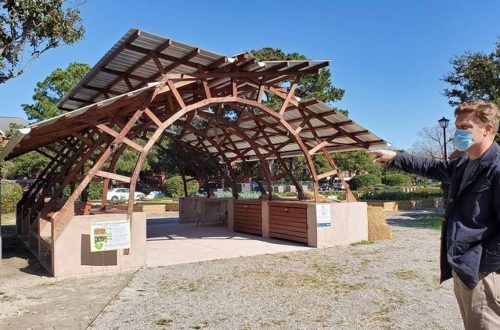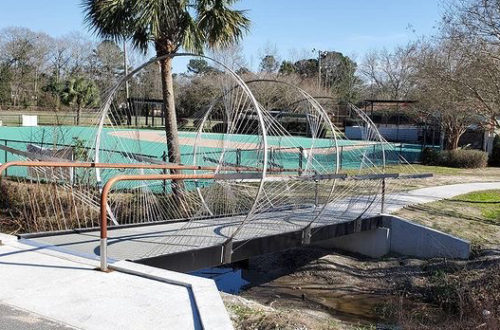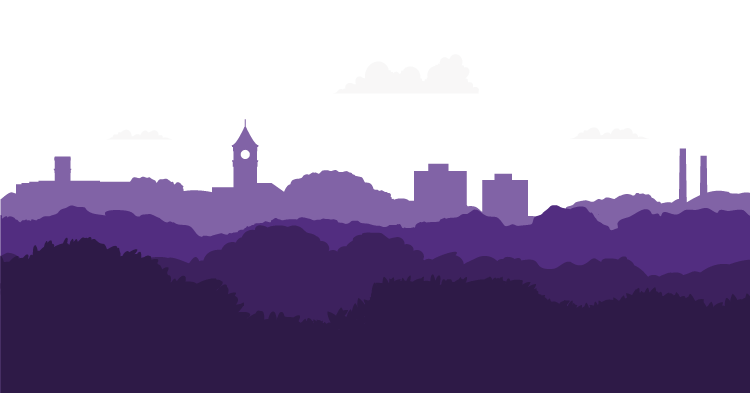A visit to our Charleston programs, where bridges are built
Dear Faculty, Staff, Alumni and Friends,

As we end the first half of the Spring 2021 semester and hopefully enjoy a little bit of a break, I thought an update of College activities might be overdue.
The big project in the Dean’s office this semester is the refresh of our College strategic plan. The previous 5-year plan is set to expire this year, so we are due to engage in the process anyway. But with a new team in place at the Dean’s office and several new department chairs, it seems like good time to assess where we are currently and think about where we want to be in 5 years. Stay tuned for updates.
Earlier this month, at long last, I finally made it to Charleston to visit our facilities and programs there, and to meet the faculty and staff who are making it work. I was in town for a little over a day, which was not a lot, but nevertheless got a sense of the exciting things happening there.
Prof. Ray Huff showed me buildings in the Historic District downtown that Clemson owns, and I got a taste of the truly amazing facility that is the Cigar Factory on Bay Street. Prof. Jon Marcoux gave me an intense introduction to the Graduate Program in Historic Preservation.

I also got to see the operations in North Charleston, meaning the Dominion Energy Innovation Center (with the world’s largest wind energy testing system), the Warren Lasch Conservation Center (which currently houses the H.L. Hunley, the first submarine to sink a ship in wartime) and the Zucker Family Graduate Education Center. While most of this complex, known as CURI (The Clemson University Restoration Institute) is the site of projects coming out of the College of Engineering, Computing and Applied Sciences (CECAS), it is also the site of the Digital Production Arts program, which is a collaboration between CECAS and our Art Department.
My visit to Charleston ended with a tour of the Architecture + CommunityBUILD project, the brainchild of Prof. David Pastre, who is working with his students to beautify neighborhood parks and gardens by designing and building architecturally interesting and innovative structures to provide seating, shelter and storage. I so loved this project and its results. Architecture students get to plan projects and see them through to their completion. Neighborhoods in need get some love and attention. And we all learn that beauty doesn’t have to cost more. Sometimes it is just about imagination and effort. Once we are truly through with COVID-19, I hope our College can think of more ways to do something similar, also here in the Upstate.

Universities generally, not just Clemson, need to think of as many ways as possible to build bridges with the community: local, regional, national and global. This is especially true of comprehensive “Research 1” institutions, like Clemson: the elite of the elite in terms of higher education in the United States.
“Go Tigers!”
Nicholas Vazsonyi, Dean
College of Architecture, Arts and Humanities
Follow Dean Nicholas Vazsonyi!

